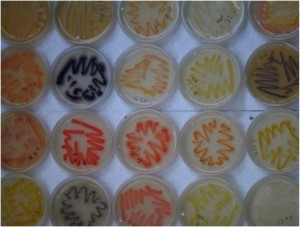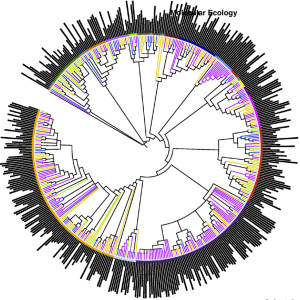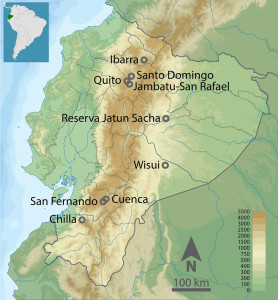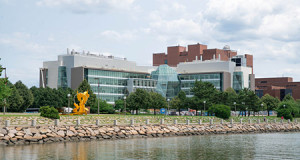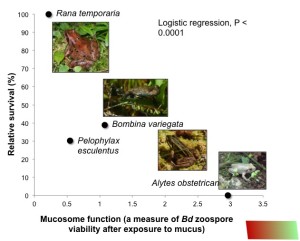A collaborative effort of 26 investigators, led by Dr. Doug Woodhams, has put together a culture collection and database of bacteria associated with the skin of amphibians from North and South America, Europe, Africa, and Oceania. All isolates were tested for activity against the chytrid fungus responsible for disease emergence and amphibian die-offs around the world. This growing database will allow researchers to identify native beneficial bacteria that can be used for probiotic therapies against the fungus.
Woodhams DC and 25 co-authors (2015) Antifungal isolates database of amphibian skin-associated bacteria and function against emerging fungal pathogens. Ecology, 96:595.
